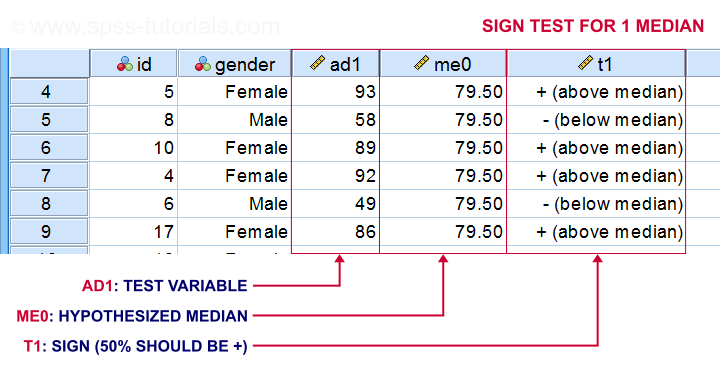
Okay, the variances are unequal, so what do we do? Simple. This is not a big surprise, because we saw in the boxplot and the descriptive statistics that there was more dispersion in the Chocolate than the No Chocolate group. 05, it means that the variances are unequal. In this case, you can see that the F is 8.080 and "Sig.", which is a p-value, is. The more spread-out the scores are, the larger variance is. Variance is a measure of dispersion, equal to the square of the standard deviation. It is a test of one of the assumptions of the t-test, namely that the variances of the two groups are equal. The first column is labeled "Levene’s test for equality of variances".

Next is the output for the t-test itself: As we saw in the boxplot, the dispersion (measured by standard deviation) is greater in the Chocolate condition than the No Chocolate condition. The mean for the Chocolate condition is 17.74, and for No Chocolate it is 14.62.

So, click on "Define Groups", say that Group 1 is "1" and Group 2 is "2" (good thing we didn’t delegate that complex decision to a machine!), click "Continue", and press "OK" to run the analysis.įirst, you get descriptive statistics on each level of your independent variable: Luckily, we just saw that the automatic recode numbered our two levels 1 and 2.
#Spss does not equal sign software#
Instead, you have to tell the software what those two levels are. Although quite skillful in selling software licenses, the trolls were not skillful enough to write software that automatically detected that there were two levels of Condition2. You see how, under "Grouping Variable", it says "Condition2(?)"? Trolls again. In the dialog that appears, put "Tip_Percentage" in the "Test Variable(s)" window and "Condition2" into the "Grouping Variable" window: To access the test, select Analyze → Compare Means → Independent Samples T Test. Now that you have satisfied the capricious whims of the trolls, we can proceed to analyze the data. You can see how the string variable has been recoded as 1s (for chocolate) and 2s (for no chocolate): In Variable View, click on the "Values" cell in the "Condition2" row (highlighted below): You can check out the results in the Data Window, both in Data View and Variable View. That last step is handy in case your data includes any missing values. In the dialog that opens, move "Condition" into the "Variable -> New Name" window, type "Condition2" in the "New Name" field and click "Add New Name", check the box labeled "Treat blank string values as user-missing". Luckily, there is a (somewhat) easy workaround. "Hey!" you shout, "I’ve already got my data entered as strings!" I know, I know. They decreed that all independent variables must be coded as numbers, not string variables.

You see, the creators of SPSS were evil troll-like creatures who delighted in inconveniencing beginning statistics students. Plotting the data is a good way to get a feel for differences between groups, but statistics can provide us with two more pieces of information: a confidence interval for the difference between means and a measure of the probability that an effect is due to chance (statistical significance).īefore we can get started with our statistical analysis, we need to take care of something.


 0 kommentar(er)
0 kommentar(er)
